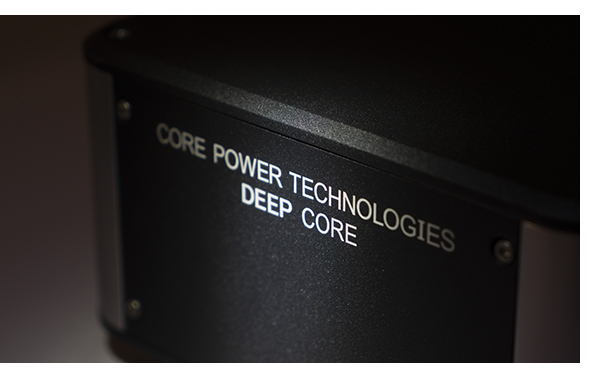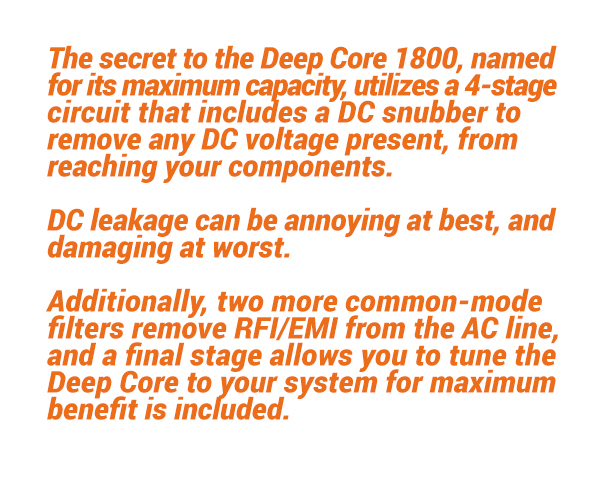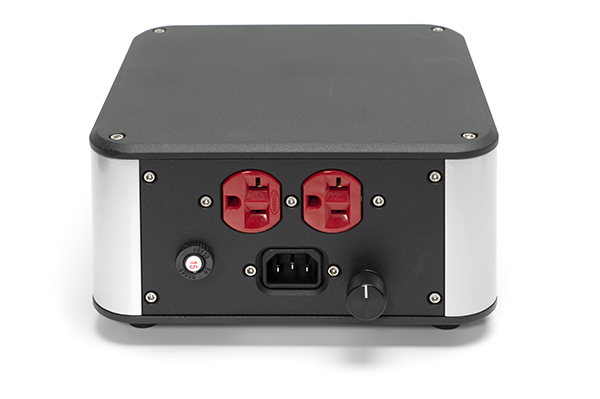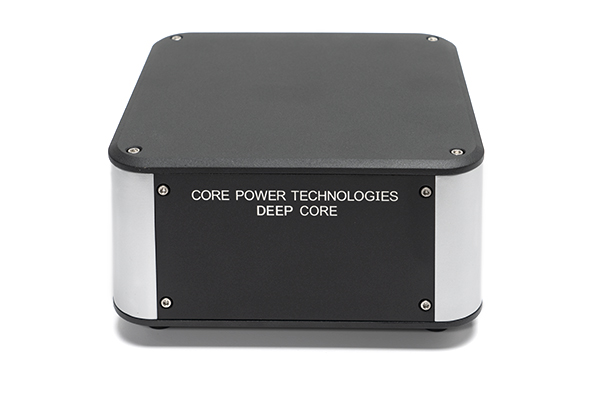The Deep Core 1800 Power Conditioner Fine Tuning Your Power
By Jeff Dorgay One of the things we always battle as audio enthusiasts is the effect that power has on our systems.
One of the things we always battle as audio enthusiasts is the effect that power has on our systems.
Whether you look at power as a giant pool that you tap into with your power cord or a stream that’s come a long way to get to you, there is still a fair amount of noise and audible grunge in the AC power that runs your audio system.
Again, some take the perspective that your amplifier’s power supply should effectively filter out whatever’s in the AC line. However, not all power supplies are created equal. Some are more effective than others – it’s no surprise that many of the world’s finest, (most expensive and heaviest,) almost always have massive power supplies, with gigantic mains transformers and banks of enormous filter capacitors.
Are you with me or against me?
If you’re of the mindset that power conditioning doesn’t matter or make a difference, there’s no point in reading any further. But if you’re with me, and you think that your HiFi system is like any other electromechanical device benefitting from fine-tuning, read on.
While the Deep Core is described as a power conditioner and can be used alone as a treatment option for your AC line, the Deep Core website suggests that for best results, it be used in front of your favorite power conditioner. Close listening to a few different conditioners from Clarus, ISO-TEK, Running Springs, and Torus confirm this, though in front of my PS Audio P15, (which actually regenerated a new AC signal) the Deep Core had no discernable effect. However, with all other passive conditioners at my disposal, this is a very worthwhile addition.
Adjusting the Deep Core in this manner is like fine-tuning VTA on a turntable when you hit the perfect spot, the music reaches a higher level of clarity, with more focus and transparency. Go slow, and you’ll know when you hit it.
This will depend on what you are starting with. In my main listening room, which has relatively new wires and a new AC panel, was not quite as grungy as in my living room, with the 60-year-old wiring. Interestingly, the PS Audio P15 in the studio registers about 1.8% distortion on the AC line, where the one in the house registers 3 – 4% on a regular. Garbage in, garbage out directly relates to how transparent your audio system will sound, because your amplifier at its lowest level is essentially modulating the AC power from the wall with a music signal. So the fewer artifacts in that carrier signal result in a more realistic presentation.
I’ve always experienced power line conditioning products to have a more noticeable effect on vacuum tube gear than solid-state, and the Deep Core offers the same result. Interestingly enough, regardless of circuit topology in the source component, the Deep Core had a more profound effect on lower priced gear, no doubt because these components do not have as sophisticated power supplies as those further up the range.
Proof for the snubbing effect took no more than powering up my vintage Dynaco Stereo 70, which always makes a nasty click through the speakers. Via the Deep Core, tweeter destroying clicks are a thing of the past. My mid 80s vintage Linn LP-12 is guilty of the same offense. Again, its crimes pardoned with the Deep Core in place. If you happen to be riddled with noise in your environment from an older furnace or appliance somewhere, the Deep Core may be the only thing that cleanses the artifacts these things produce from your listening environment.
Power products are basic – you either hear the difference they make in your audio system or you don’t. Some change the sound without necessarily improving the presentation or revealing more musical detail.

After trying the Deep Core in a few different system configurations, it unmistakably does reveal more music with no shortcomings. Transients aren’t compromised, and the bottom end is not smeared – another sin that more than one power conditioner has committed during the audition process. Best of all, more musical detail is revealed, without the mid to high range becoming etched, harsh, or overemphasized. This is much harder than it sounds. That’s why most power products ultimately end up being unplugged in favor of the existing devil in the wall socket.
Trying not to go all Darth Vader on you, when you plug a Deep Core into your system, you should hear your soundstage get bigger, and thanks to the noise floor going down, things should sound slightly louder at the same volume level. As always, queue up a few tracks you know intimately. If you already have a power conditioner in your system, insert the Deep Core in front of the existing power conditioner, and as always, use the highest quality power cord between Deep Core and the wall socket.
I started with new and old acoustic tracks from Crosby, Stills and Nash, along with some of my favorite Kurt Vile tunes. Densely packed rock records still sound cleaner, but delicately layered vocal compositions are going to have you smiling faster. Those who’s tastes lean towards female vocal audiophile recordings will freak out instantly.
Once you’re really comfy with Deep Core, having gone back through a few cycles of auditioning it in and out of the system, get ready to fine-tune with the contour control. If you can enlist the help of a friend, this will make the process much more comfortable, because you can be sure of staying in relatively the same listening position. Going in about 5-degree increments slowly will take you to the sweet spot.
With a claimed capacity of 1800 watts, the average to slightly above average system will be good to go with a Deep Core. Plugging a gigantic, high current draw power amplifier will tax the Deep Core, and you will hear a flattening of musical transients at extreme volume. You’ll know when you’ve gone too far. Then you’ll have to decide which part of your system is more important to cleanse or perhaps invest in a second one. At $1,295 the Deep Core is by no means crazy money, and in the context of the improvements it makes, an excellent bargain.
https://www.underwoodhifi.com/products/deepcore-1800
The CORE POWER Deep Core 1800
Peripherals
Analog Source AVID Ingenium Plug N Play
Digital Source Gold Note CD-1000
Amplifier VAC Sigma 170i, Pass INT-60, PrimaLuna EVO400
Cables Tellurium Q Black Diamond






